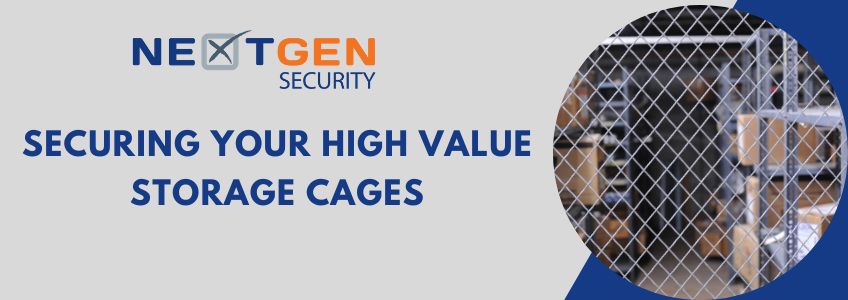Many enterprises have high value inventory, equipment, valuables, and assets that need to be stored in cages. This is particularly the case for industrial sites and banking institutions. Making sure these assets are adequately secured is a key concern.
Controlling who can – and cannot – access these cages is the first line of defense in securing their contents. Keys simply just don’t pass muster for controlling access – there are usually too many floating around, they often get lost and are sometimes stolen. This is why many enterprises are opting for electronic access control solutions such as magnetic and electronic locks, as they require authorized credentials before they allow access.
For added security, access readers can be programmed to require a combination of credentials, including a prox card, PIN number, and/or biometric authentication such as fingerprints or facial recognition.
From a budgetary standpoint, many electronic locks are upgradable, ensuring the hardware already invested in doesn’t become obsolete as technology changes. Web-based systems that don’t require separate software programs are growing in popularity, as they can be controlled remotely from any place where there’s Internet access. And while Prox cards have long been the credential of choice, smartphones are quickly changing that, as they’re more convenient and often, more secure.
Many of today’s electronic access systems provide an audit trail history that provides information on who has access the location and when. They also feature a manual key override to ensure that the location (in this case, cage) can still be accessed using a single key in the event of an electronic failure.
Other security measures can be implemented, as well, to safeguard what’s stored in high value cages and storage cabinets. Intrusion detection systems that include door contacts and motion detection inside the cage are proving very beneficial. For some end users, seismic detection measures also work very well. Seismic devices rely on small seismic sensors and they essentially form an invisible perimeter fence around the area that’s being protected. When certain fluctuations are detected within that space, seismic data generates early intrusion warnings to alert management and/or security teams that there’s an incident occurring. And because the sensors are typically placed just under the ground’s surface, they’re ideal for protecting locations like vaults, cages and safes in a way that’s very effective but not visible.
Fire is another concern when it comes to storing high value equipment and other assets. Security cameras that are equipped with specific analytics to detect smoke and fire – even before the required AHJ approved fire alarm system would – are a strong line of defense. Additionally, security cameras that provide video analytics intelligence (which are very common today) can detect loitering and virtual line crossing before a breach is carried out. When a potential breach is detected, the camera can trigger a security alert, even sooner than a traditional intrusion detection system, and also provide situational awareness intelligence to onsite or remote monitoring personnel.
We at NextGen understand how important it is to protect high value assets and can deliver the expertise and the technologies needed to do just that.

